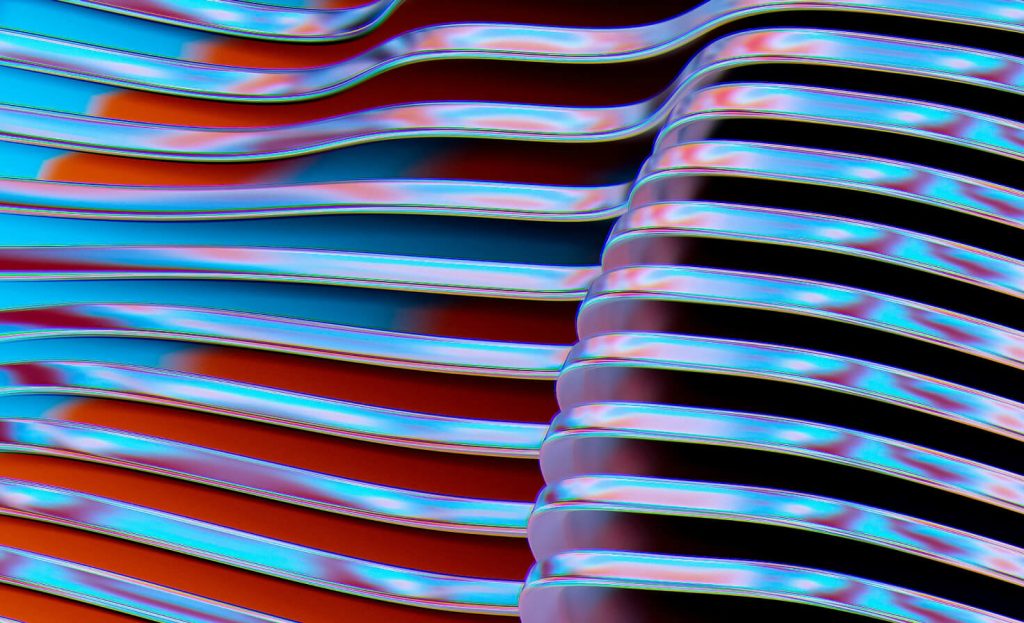Enterprise products are becoming larger and more connected, while teams must deliver faster and maintain high quality. To keep projects consistent, many businesses turn to unified design systems that bring clarity and alignment across development, product and service design.
We spoke with Dmytro Plotnikov, Customer Experience Lead, about ELEKS's approach to unifying interfaces across enterprise projects and why building a shared design system has become a strategic step for both our team and our clients.
As enterprise products grow larger, what challenges do teams face, and how can a design system help?
Most large digital products span multiple platforms. Without a common foundation, every new initiative risks duplicating effort, introducing inconsistencies, and slowing down delivery. A design system addresses this by codifying not just visuals, but also interaction models, accessibility standards, and governance rules. It ensures that teams across the organisation can build quickly, with confidence that their work aligns with brand, compliance, and delivers a consistent customer experience.
I often compare it to Microsoft's ecosystem: a family of services brought together by consistent rules, components, and principles. At ELEKS, we strive for a common foundation in our projects, enabling us to assemble different products faster and with higher quality.
What makes ELEKS UI different, and how do teams use it effectively?
We've built a large, reusable design system, ELEKS UI, that can be applied broadly—not just as a component library, but as a platform that supports different products. As a result, new project teams don't have to reinvent the wheel: they start from a shared base and move immediately within a unified framework.
It's critical to align roles and processes upfront—design, software development, QA, technical documentation, and so on. This touches everyone and minimises divergence during implementation.
How does a unified design system help teams stay efficient and consistent as products and workflows evolve?
Optimisation isn’t new, but today—when AI is deeply integrated into workflows—a unified system allows both people and tools to work faster and more predictably. We always explain the value of standardisation and how it cuts costs, and we cannot ignore that, so we built our own solution and are developing it systematically.
A large desktop project with a sizable team and long timelines showed clearly that a systems approach saves significant time and removes doubts about the value of a single design system—especially if we want to scale enterprise products consistently.
We can simply compare the software development process with the transport logistics. Let’s imagine that we already have “drones” solving point problems (isolated assets, local libraries), but the backbone is still “trucks”: standardised, reliable, coordinated routes. The unified design system is the base that centralises the “freight flow” of interface solutions. Artificial intelligence can be incorporated into this chain, but you need a solid foundation first.
Can you explain how ELEKS UI is structured to support projects effectively?
ELEKS UI is built around three pillars that form the foundation for efficient and consistent enterprise projects.
Pillar 1: Component library
A complete, familiar set for all designers and developers. It lets teams quickly select the right elements, know where they’re documented, and how to use them properly—saving time from day one.
Pillar 2: Knowledge base and design ops space
Agreed roles and processes, naming conventions, documentation templates, diagrams, and best practices. Previously, each project rebuilt this “from zero.” Now we provide a ready framework that accelerates kickoff and reduces chaos when everyone brings different artefacts from previous products.
Pillar 3: Code Connect integration: production-ready components
Library components come with ready-to-use code that developers can drop into the project immediately. Instead of writing from scratch, they copy-paste proven solutions and move on. We’ve tested this approach—it noticeably speeds up delivery.
How do you balance standardisation with the need for customisation?
Our analysis shows around 80% of enterprise UI/functionality repeats. Typical sign-in forms, tables, charts, cards—almost everywhere they’re the same. Clients care about their logo, brand colours, fonts, and basic identity—all configured without rewriting logic. Up to 20% can be truly unique (e.g., complex data visualisations). We leave room for customisation there, without undermining the shared foundation for the majority of the interface.
Without a centralised system, different teams in a large product drift apart: the same button looks and behaves differently across modules. Users lose confidence (“Is this even clickable?”), And we lose time and budget polishing UI to a single standard. In the end, UI polish costs far more than it should.
How do you communicate the value of a design system to clients, and how does it differ in product vs. service companies?
Historically, “building a design system from scratch” at the start meant spending time not on features but on the base. Clients naturally want quick features. Today, our system drastically reduces adaptation time: instead of months of “finishing” the base, we mostly trim what’s unnecessary and configure branding. It’s important to set expectations clearly—for example, our current base stack is React, which enables feature work from day one, without waiting for designers to finalise every component.
In product companies, a design system is a must-have. There’s a process owner, an internal portal, and stable teams. In a services model, products change, conditions vary, and some projects end sooner than expected—so maintaining one line used to be hard. Now, with a shared solution, we’ve removed most of the startup pain, leaving risk only where someone deliberately ignores the process.
Final thoughts
A unified design system is no longer just a nice-to-have—it’s a strategic foundation for scaling digital enterprise products efficiently. By standardising 80% of common UI patterns while leaving room for up to 20% of customisations, ELEKS UI allows teams to move faster, reduce errors, and maintain consistency across projects.
Early alignment, transparent communication, structured processes, and UX consulting ensure that even minor UX gaps are addressed before release, helping maintain client trust and confidence.
If we want to scale enterprise products consistently, doing it without a design system will simply be slower and more expensive. Now we have a foundation we can rely on.

FAQs
Product and service design is the process of creating solutions—both digital and physical—that meet user needs, solve problems, and deliver value. It involves understanding the user journey, defining functionality, designing interactions, and ensuring that the overall experience is seamless, efficient, and aligned with business goals. In enterprise contexts, it covers not just the look and feel but also the processes, workflows, and systems that support the product or service.
Not exactly. UI (User Interface) and UX (User Experience) design focus specifically on the way users interact with a product—the interface, the flow, and the overall experience. Product design, on the other hand, is broader. It includes UI/UX but also considers business objectives, functionality, technical feasibility, and how the product fits into the larger system or service. Think of UI/UX as one critical part of the overall product design process.
Related insights








The breadth of knowledge and understanding that ELEKS has within its walls allows us to leverage that expertise to make superior deliverables for our customers. When you work with ELEKS, you are working with the top 1% of the aptitude and engineering excellence of the whole country.

Right from the start, we really liked ELEKS’ commitment and engagement. They came to us with their best people to try to understand our context, our business idea, and developed the first prototype with us. They were very professional and very customer oriented. I think, without ELEKS it probably would not have been possible to have such a successful product in such a short period of time.

ELEKS has been involved in the development of a number of our consumer-facing websites and mobile applications that allow our customers to easily track their shipments, get the information they need as well as stay in touch with us. We’ve appreciated the level of ELEKS’ expertise, responsiveness and attention to details.

